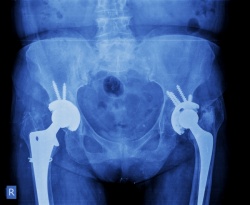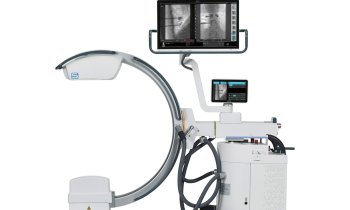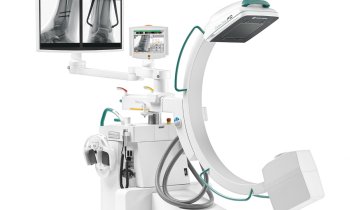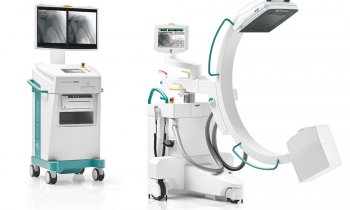Infections following joint-replacement surgeries
How to optimize prevention and therapy strategies
For all the advances being made in this discipline, postoperative infections remain a great challenge for orthopaedists and trauma surgeons. More than 7,000 experts from around the globe are gathering in Prague for the 16th EFORT Congress to consult on ways to optimise prevention and therapy for these dreaded complications.


Dr Stephen Cannon, President of the European Federation of National Associations of Orthopaedics and Traumatology (EFORT): “Infections pose a problem that we must take very seriously and that really pertains to every orthopaedist or trauma surgeon.” Infections therefore were selected as the focal topic for the 16th EFORT Congress in Prague, an event that has brought together more than 7,000 orthopaedists and trauma surgeons from around the globe.
Orthopaedic procedures involving the placement of implants are especially susceptible to infections, e.g., hip, knee-joint or shoulder-joint endoprostheses. And current OECD data show that the incidence of these very procedures is increasing at a fast pace because of the demographic trend and rising life expectancy.
In Denmark, for example, the number of hip replacements per 100,000 population increased by 40% between 2000 and 2012, while the knee replacement rates more than tripled. During the same period, in France the knee replacement rate rose by 80%.
Steady increase in joint-replacement surgeries, steady increase in resistant germs
Dr Cannon: “The rising number of joint-replacement procedures can be expected to cause a rise in the incidence of infections. In Great Britain, for instance, infection rates for hip and knee replacement surgeries vary from 0.2 to 4.0 per cent depending on myriad factors. If we could achieve the lowest infection rates throughout the system we would save 250 to 370 million euros a year. These data alone show the urgency of this issue.”
In an analysis it conducted, the European Center for Disease Prevention and Control (ECDC) found that infections occurred in 0.7 per cent of the knee replacement operations and in one per cent of the hip replacement procedures in Europe on average. Infections were among the most frequent cause of rejected prostheses; among implanted hip prostheses, they even resulted in death in one out of every 200 cases according to the ECDC report. Postoperative infections (surgical site infections, SSI) are among the most frequent nosocomial infections overall.
New combinations of antibiotics to fight resistances
The experts gathered in Prague are also discussing a special problem of growing significance: More and more postoperative infections are caused by bacteria exhibiting multiple resistances to the antibiotic substances commonly in use. EFORT President Dr Cannon: “Resistance to antibiotics has become a central problem in the treatment of all categories of bone and joint infections.” Surveillance programs such as, for instance, that of the Robert Koch Institute in Germany, show that an increase in resistances to gram-negative rod-shaped bacteria has been observed along with the greater spread of gram-positive nosocomial infection agents such as Methicillin-resistant Staphylococcus aureus (MRSA).
Dr Cannon: “We must change our antimicrobial strategies in light of such trends. That is why one of the issues we are discussing at the EFORT Congress is the current data picture on which new combinations of antibiotics we should be using in infection prevention but also in therapy to counter common resistances in an effective manner.”
Nano-diamonds and Co: Innovative coatings prevent microbial colonisation
There is a growing body of data indicating the benefit of innovative antibacterial coatings on implants, which are intended to prevent microbial colonisation. Not only antibiotic coatings are used. Many different kinds of materials are being investigated or have already proved useful, as many studies presented in Prague also show. For instance, silver nano-particles, various antimicrobial peptides or nano-diamonds have all been found to be effective against implant germs.
Dr Cannon: “All this is a highly dynamic and fascinating field. The new coated implants are expensive, however, and that can become a problem for many healthcare systems in Europe. We are working closely with manufacturers to ensure that these important advances benefit patients everywhere in Europe.”
“Awareness of the infection problem, knowledge on how to prevent it and the use of up to date diagnostics and treatment algorithms are paramount”, the EFORT Presidet says. “The goal of the EFORT meeting is to improve our overall performance in the prevention and treatment of this dreaded complication and thus lessen the burden of infection on our patients, hospitals, our health system and last but not least on ourselves.”
About EFORT
The European Federation of National Associations of Orthopaedics and Traumatology (EFORT) is the umbrella organisation linking Europe´s national orthopaedic societies. EFORT was founded in 1991 in the Italian Marentino. Today it has 45 national member societies from 42 member countries and twelve associate scientific members.
EFORT is a non-profit organisation. The participating societies aim at promoting the exchange of scientific knowledge and experience in the prevention and treatment of diseases and injuries of the musculoskeletal system. EFORT organises an annual congress, seminars, courses, forums and conferences within Europe. It also initiates and supports basic and clinical research.
Quelle: B&K Kommunikationsberatung
27.05.2015











